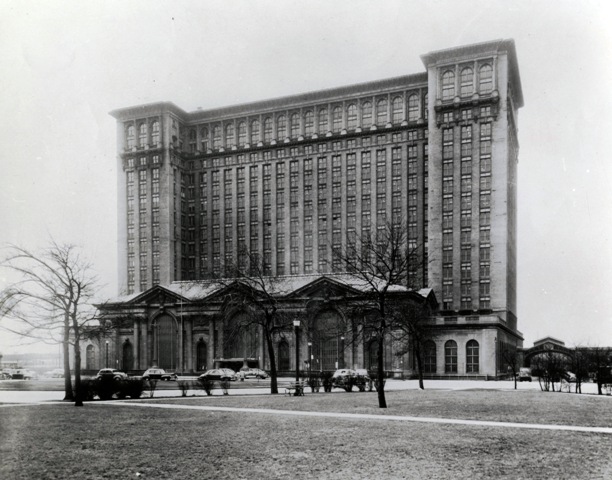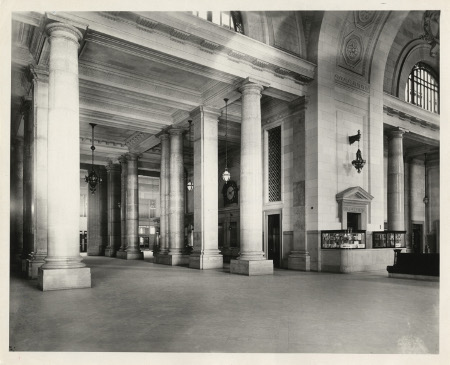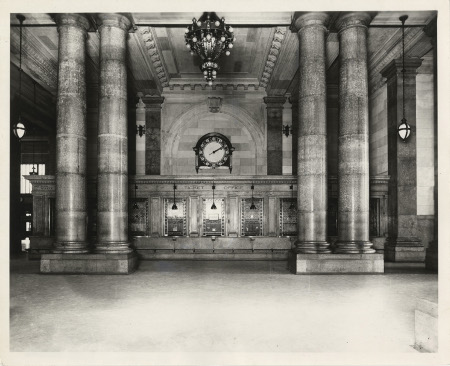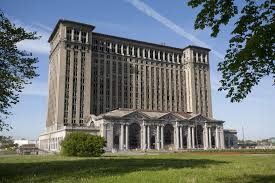By Robert Tate, Automotive Historian and Researcher
Images Courtesy of the Burton Historical Collection
Posted: 06.27.2018
The following Story of the Week originally appeared in December of 2014. Since the Ford Motor Company announced their purchase of the Michigan Central Station last week, we thought it would be appropriate to reacquaint our readers with the history of the site. Ford plans to refurbish the building and the surrounding land in order to create a facility that will develop the latest in Autonomous Vehicle (AV) technology.
The historical Michigan Central Station Terminal opened to the public on December 26, 1913 and for many years was the travel gateway to the city of Detroit and other popular cities. Hundreds upon thousands of travelers each day would pass through the ticket windows. They could listen to the sounds of departing trains or say “good bye” to loved ones as they left for the war. Some would travel on special occasions to Chicago to see family members. The Michigan Central Station is located at 2405 West Vernor near downtown Detroit. Michigan Central Depot was one of the largest train stations in the country. Putting these times in perspective, in 1912, the automobile was not yet the basis of everyday transportation, let alone commonly used for long distance travelling. Most people could not afford an automobile. Many Americans relied on public transportation. Michigan Central was constructed at this location because the community thought it would be an anchor for much more needed development in the city of Detroit.

During World War I rail travel in the United States was at its peak where there were more than two hundred trains that left the Detroit station each day for passengers traveling across the country. The building architecture was designed by the Warren & Westmore, and Reed & Stem firms which they also constructed and designed the popular New York city's Grand Central terminal station as well. The cost of the Michigan Central station was 15 million dollars to build and construct. The building was designed in two distinct parts along with an 18-story tower; the roof height was 230 feet. The inside this beautiful building it featured the main waiting room on the main floor which was designed after an ancient Roman Bathhouse with its walls made of marble and vaulted ceilings. The building also had a large hall adorned with Doric Columns that housed a gorgeous ticket office and arcade shops. Beyond the arcade was the concourse, which displayed brick walls and a large copper skylight for that perfect view. Passengers could walk down a ramp to the departing train platforms for their next travel destination.

During the 1940s, more than three thousand people worked within the office tower and more than four thousand passengers a day traveled through the station. President Herbert Hoover, along with President Harry S. Truman, President Franklin D. Roosevelt, actor Mr. Charlie Chaplin and Thomas Edison were some of the famous people who traveled through the Michigan Central Station. During World War II, the Michigan Central Station saw a great deal of military usage. Once the war had ended, however, the passenger volume began to decline. Passenger travel plans decreased in part because more consumers were able to purchase new automobiles for their basic transportation needs.

In 1956, the owners of the Michigan Central Station offered to sale the building at five million dollars; one third of its original cost in 1913. In 1956 was also the year that the interstate Highway Act passed starting the end of most rail way passenger services. The cities of Detroit and Chicago were no exceptions. Another attempt to sell the building took place in 1963. However, no one was interested in buying at the time. In 1967, maintenance costs were beginning to increase and the restaurant, arcade, shops, and the main entrance were closed leaving only the ticket offices open. In 1971, with the introduction of the Amtrak services contract, the main waiting room and entrance area were reopened. By 1975 a $1.25 million dollar renovation project had begun after six years of operations. The building was eventually sold for a transportation center project that never took place. On January 6, 1988 the last Amtrak train chugged away and the building officially closed its doors. In 1996, Controlled Terminals, Inc. a branch of Centra, Inc.’s Ambassador Bridge division purchased the Michigan Central Station. Manuel Moroun is the Chairman and CEO of this company.

The Michigan Central Depot will always have wonderful memories of its golden years of service. Eric Styrlander of the Detroit News once said, “The Michigan Central Depot has been bypassed by a generation devoted to the car and the airplane: an aging, gray monument to the Golden age of Railroading. The depot at fourteenth and Michigan looks forlornly over Roosevelt Park, once trafficked by streaming passengers and in war by marching troops.” The Michigan Central Depot remains standing today as a monument of a past era that, simply put, is unforgettable.
Bibliography:
Styrlander, Erik. “The Depot a Hollow Shell of Memories,” The Detroit News June 5, 1966.
Railroads Stations Michigan Central Depot. Detroit Public Library – The Burton Historical Collection.



